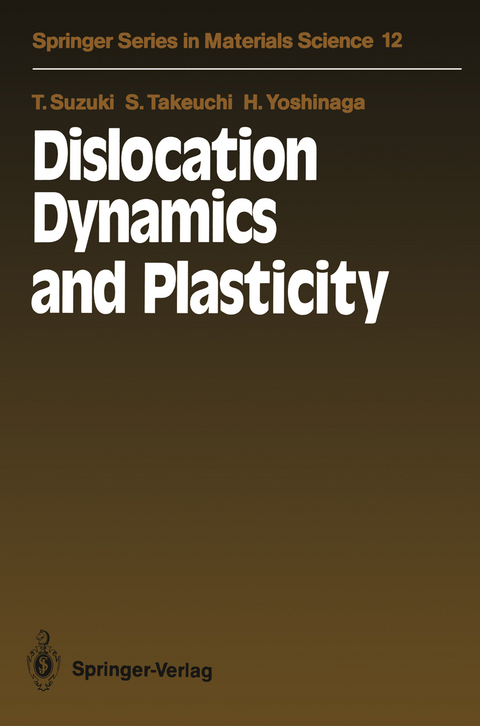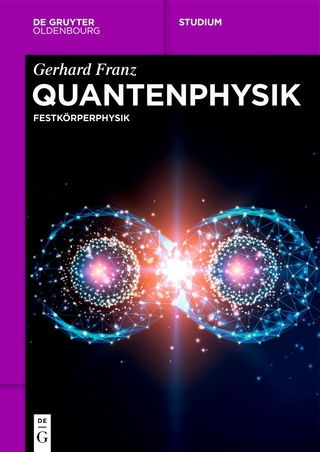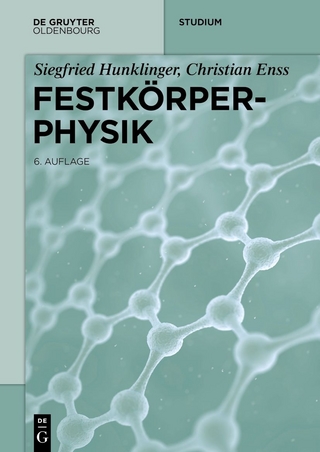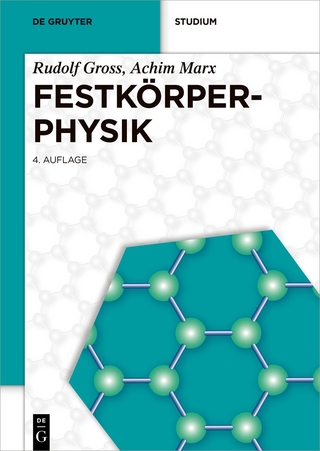
Dislocation Dynamics and Plasticity
Springer Berlin (Verlag)
978-3-642-75776-1 (ISBN)
1. Dislocations and Their Fundamental Properties.- 1.1 Geometry of a Dislocation.- 1.2 Stress Field and Energy of Dislocations.- 1.3 Force on a Dislocation.- 1.4 String Model of a Dislocation.- 1.5 Obstacles to Dislocation Motion.- 2. Motion of Dislocations in Soft Metals.- 2.1 General Characteristics.- 2.2 Intrinsic and Extrinsic Barriers for the Motion of Dislocations.- 2.3 Dislocation Velocity.- 2.4 Frictional Forces due to Conduction Electrons and Phonons.- 2.5 Theoretical Studies of the Frictional Forces.- 3. Dislocation Motion in the Field of a Random Distribution of Point Obstacles: Solution Hardening.- 3.1 Solution Hardening.- 3.2 Comparison of Theories of Solution Hardening with Computer Simulation.- 3.3 Effect of a Random Distribution of Point Obstacles on ?c.- 3.4 Appendix: Elastic Interaction Between a Dislocation and a Solute Atom.- 4. Dislocation Dynamics and Strength of Crystalline Materials.- 4.1 The Loss of Strength of Metals and Alloys in the Superconducting State.- 4.2 Loss of Strength in the Normal State of Solid Solutions at Low Temperatures.- 4.3 Theory of Inertial Effects.- 4.4 Quantitative Treatment of the Strength of Metals and Alloys of fcc Structure.- 5. Dislocation Motion Controlled by the Peieris Mechanism.- 5.1 Introduction.- 5.2 Dislocation Glide by the Peieris Mechanism.- 6. Dislocations in bcc Metals and Their Motion.- 6.1 Dislocations in bcc Metals and Their Peierls Potential.- 6.2 Computer Experiments.- 6.3 Plasticity of bcc Metals.- 7. Dislocation Motion in Semiconducting Crystals.- 7.1 Introduction.- 7.2 Structure of Dislocations in Semiconducting Crystals.- 7.3 Mobility of Dislocations in Semiconducting Crystals.- 7.4 Effect of Electronic Excitation on the Dislocation Mobility.- 7.5 Photoplastic Effect in II-VI Compounds.- 8.High-Temperature Deformation of Metals and Alloys.- 8.1 Deformation Mechanism Map.- 8.2 Deformation due to Dislocation Motion.- 8.3 Identification of Deformation Mechanism at High Temperatures.- 9. High-Temperature Deformation Mechanism in Metals and Alloys.- 9.1 High-Temperature Deformation Mechanism in Pure Metals.- 9.2 High-Temperature Deformation Mechanism in Alloys.- 10. High-Temperature Deformation Mechanism in Composite Materials.- 10.1 Types of Composite Materials.- 10.2 High-Temperature Deformation Mechanism in Dispersion-Strengthened Materials.- 10.3 High-Temperature Deformation Mechanism in Fiber- and Lamella-Reinforced Materials.- References.
| Erscheint lt. Verlag | 23.12.2011 |
|---|---|
| Reihe/Serie | Springer Series in Materials Science |
| Zusatzinfo | X, 228 p. |
| Verlagsort | Berlin |
| Sprache | englisch |
| Maße | 155 x 235 mm |
| Gewicht | 375 g |
| Themenwelt | Naturwissenschaften ► Physik / Astronomie ► Festkörperphysik |
| Naturwissenschaften ► Physik / Astronomie ► Mechanik | |
| Naturwissenschaften ► Physik / Astronomie ► Thermodynamik | |
| Technik ► Maschinenbau | |
| Schlagworte | composite • Crystal plasticity • Deformation • Dislocation • Dislocation Dynamics • High-temperature deformation • Peierls mechanism |
| ISBN-10 | 3-642-75776-6 / 3642757766 |
| ISBN-13 | 978-3-642-75776-1 / 9783642757761 |
| Zustand | Neuware |
| Haben Sie eine Frage zum Produkt? |
aus dem Bereich


